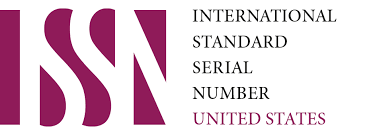Improvement Of CEFR Levels in Foreign Language Teaching
DOI:
https://doi.org/10.62480/jpip.2024.vol33.pp24-29Keywords:
standards, CEFR, strategies, communicative tasksAbstract
The article "Improvement of CEFR Levels in Foreign Language Teaching" explores the efficacy of incorporating the Common European Framework of Reference for Languages (CEFR) in foreign language instruction to enhance language learning outcomes. The article provides an overview of the CEFR and its relevance in language education, emphasizing its role in setting clear learning objectives, assessing proficiency levels, and promoting international language standards
References
Alderson, J. C. (2005). Diagnosing foreign language proficiency: The interface between learning
and assessment. A&C Black. (pp. 1-188)
Byrnes, H. (2008). Revisiting the Common European Framework: Examining the potential for
pedagogical change. The Modern Language Journal, 92(4), 577-589.
Coste, D., Moore, D., & Zarate, G. (1997). Plurilingual and pluricultural competence:
Introduction to the Council of Europe's language policy division. Language Policy Division,
Strasbourg.
Council of Europe. (2001). Common European Framework of Reference for Languages:
Learning, teaching, assessment. Cambridge University Press. (pp. 1-270)
Elder, C. (2009). The common European framework of reference for languages and its relevance
for language testing and assessment. Language Testing, 26(2), 185-201.
Fulcher, G., & Davidson, F. (2007). Language testing and assessment: An advanced resource
book. Routledge. (pp. 1-340)
Hamp-Lyons, L., & Katchen, J. (2001). The CEFR and language testing: Implications for the
classroom. ELT Journal, 55(4), 346-353.
Hawkey, R. (2006). The impact of the Common European Framework on language testing.
Annual Review of Applied Linguistics, 26, 262-287.
Huhta, A., Vogt, K., Johnson, E., & Tulkki, H. (2013). The European Language Portfolio as a
Language Learning Diary: Learners' and Teachers' Perspectives. European Centre for Modern
Languages. (pp. 1-224)
Little, D. (2006). The Common European Framework of Reference for Languages: Perspectives
on the making of supranational language education policy. The Modern Language Journal, 90(4),
-545.
McNamara, T. (2014). The CEFR in practice. Cambridge University Press. (pp. 1-320)
Downloads
Published
Issue
Section
License

This work is licensed under a Creative Commons Attribution-NonCommercial 4.0 International License.
User Rights
Under the Creative Commons Attribution-NonCommercial 4.0 International (CC-BY-NC), the author (s) and users are free to share (copy, distribute and transmit the contribution).
Rights of Authors
Authors retain the following rights:
1. Copyright and other proprietary rights relating to the article, such as patent rights,
2. the right to use the substance of the article in future works, including lectures and books,
3. the right to reproduce the article for own purposes, provided the copies are not offered for sale,
4. the right to self-archive the article.












